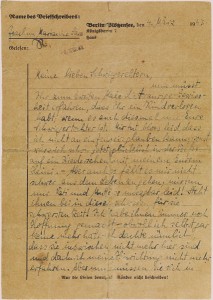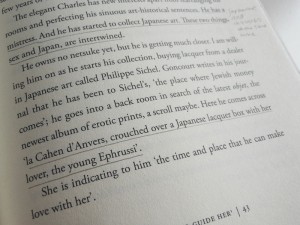In the archive of the Jewish Museum Berlin, there is a moving letter that Marianne Joachim wrote to her in-laws on 4 March 1943. That same day at the Berlin Plötzensee detention center, the young woman was executed.

Farewell letter from Marianne Joachim née Prager (1921 – 1943)
© Jewish Museum Berlin, photo: Jens Ziehe
What had happened? Marianne and Heinz Joachim supposedly joined a resistance group in 1941 led by Herbert Baum. A Jew and communist, Baum had been gathering like-minded friends around him since 1933 to generate resistance against the politics of National Socialism. On 18 May 1942, the group attempted to set fire to the anti-Soviet exhibit “The Soviet Paradise” in Berlin’s Lustgarten. Among the members jailed in short order and sentenced to death were Marianne and Heinz Joachim.
We learn from her letter that finding out that her husband had already been executed on 18 August 1942 in Berlin Plötzensee was the “heaviest stroke of fate” for Marianne. Her greatest concern was for her parents, Jenny and Georg Prager. They were deported in March 1943 to Auschwitz and Theresienstadt where they were killed. Marianne’s sister, Ilse, was able to escape on one of the last Kindertransports to England. Heinz Joachim’s father Alfons, died at the end of 1944 at the concentration camp Sachsenhausen. His mother, Anna, did not have a Jewish background and therefore survived the National Socialist period, as did his brothers. → continue reading
